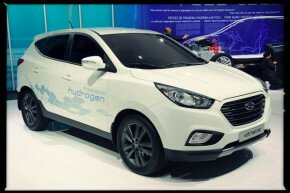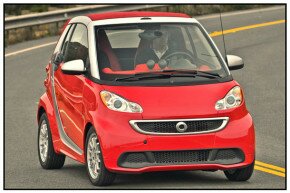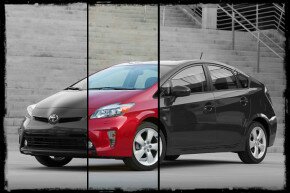2013 Nissan Leaf EV
 |
Nissan Leaf was introduced to the market back in 2011 and since then it remains the highest-volume battery electric car on sale in the US. 2013 Nissan Leaf, the pioneer in the segment of EVs, gains a new charging system that can cut charging times nearly in half. It also has a few new features, minor improvements to its range and a new, less expensive base model.
Nissan is mixing things up to boost sales in 2013, and that’s a good thing for consumers. Production has now moved to the factory in Smyrna, Tennessee, which ultimately translates into a lower production cost for the Leaf.
The most notable change for the 2013 Nissan Leaf is its new 6.6-kW onboard charger. With it, one can replenish the battery in about four hours using a 240-volt electricity source: half the time it took previously. Nissan has also made changes to the regenerative brakes and battery pack with the goal of improved energy efficiency and thereby range.
Those driving the Leaf for the first time are often impressed by how little difference there is between the electric car and a comparable internal-combustion hatchback. The Leaf is no golf cart, and it accelerates as well as most gasoline-powered cars of its size. It can haul four adults in comfort (or five for short distances), and even gives a decent amount of cargo room. In short, the Leaf is a very capable daily driver with an operating cost that’s a fraction of gasoline-engined cars, as long as you pay careful attention to the state of battery charge.

The 2013 Leaf carries on with the same styling introduced in 2011, its look is contemporary and conventional, and even its concessions to aerodynamics don’t look out of place on the car. The new entry-level S model comes standard with 16-inch steel wheels, remote entry/ignition, heated exterior mirrors, LED taillights, power accessories, automatic climate control, a heated steering wheel, heated front and rear seats, a trip computer, Bluetooth, a 4.3-inch LCD information display and a four-speaker audio system with USB/iPod port and auxiliary audio jack. Also standard is the old 3.6-kW charger, but the faster 6.6-kW unit is available.
SV and SL trim levels will offer standard and available features including 17-inch alloy wheels, a 360-degree rearview camera, a navigation system with 7-inch display and a premium Bose audio system. SL models get leather upholstery standard. Range-topping SL models can be distinguished by the small solar panel embedded in the roof spoiler, used to provide supplemental charging for the Leaf’s 12-volt accessory battery.
SV and SL models also get a new “B-mode” driving mode, which allows for more aggressive deceleration and braking when descending hills, for example. Cargo space increases to 24 cubic feet behind the rear seats and 30 cubic feet with the 60/40-split rear seat folded.
Power comes from a 80-kilowatt (roughly 107-horsepower) electric motor, fed by a 24-kilowatt-hour lithium-ion battery pack. The car is single-speed, yet thanks to the motor’s instantly available 207 pound-feet of torque, the run from 0-60 takes less than 10 seconds, and the car is capable of a 90-mph top speed. For its intended purpose, both figures are perfectly acceptable.

The Leaf is a connected car in more ways than one. A smartphone app lets owners set charging times (to benefit from off-peak rates), cool the cabin or heat the cabin for winter comfort. The app also allows owners to monitor the charging process, and an alert is sent if charging is interrupted. Owners without smartphones can also control many of these functions via the vehicles’s display screen.
For 2013, the Leaf reportedly gets a bit more range, too, though the EPA has yet to publish new numbers for the car. Expect a modest gain over last year’s projected 73-mile range, but be aware that cold weather or high speeds can reduce that number by as much as 33 percent. While the Leaf makes an ideal commuter car (assuming you have the ability to plug in at work, or don’t exceed its condition-dependent range), it’s still not quite functional enough for most families to choose as an only car.
While the 2013 Nissan Leaf now starts at an attractive $29,650 (including destination charge but excluding the $7,500 federal income tax credit), perhaps the most interesting deal is the vehicles’s $199 per month lease. Those concerned with long-term battery capacity or even electric car functionality can test the waters with an affordable three-year lease, without making the commitment to purchase. If you’re on the fence about going electric, it may be just the incentive you need.
















Leave a Reply